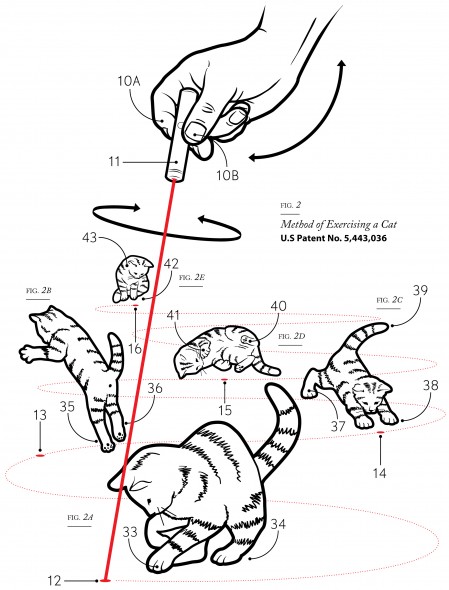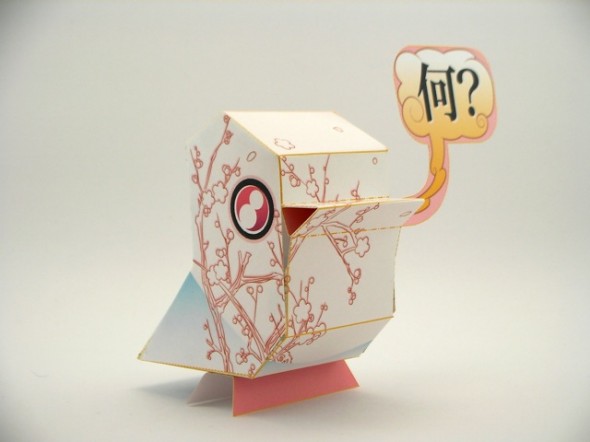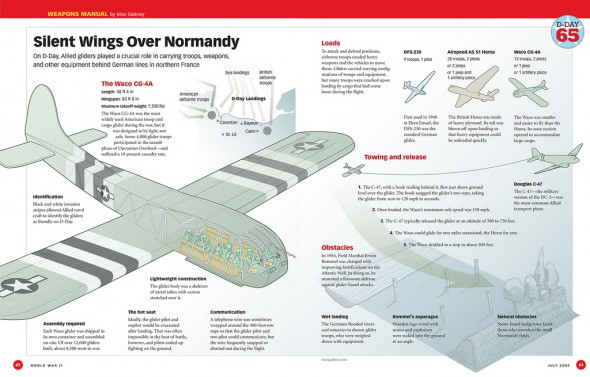
Josh McKible - Method of Exercising a Cat
Tell us about your background?
I’m currently living in a suburb of Tokyo, Japan but I’m originally from Upstate NY, from a town called Newburgh thats about an hour north of NYC. I did my undergraduate studies at SUNY Purchase, I went in for painting, but came out doing sculpture. Mostly mechanical, kinetic kinds of things that tended to break down or explode (sometimes on purpose). I think that’s where my fascination with how things work started. I then went to the School of the Art Institute of Chicago for an MFA. I came out doing sculpture and kept at it for a few years, until I discovered the Mac. That gradually lead me into graphic design, first as a hobby then as a profession. I art directed a few different magazines in NYC for a few years, until I started doing illustration full-time in 2004.

Josh McKible - Car Exercises
Are you a freelancer or in-house?
Full-time freelance, although technically I’m an employee of my own company, MCKIBILLO, INC.
Software of choice?
Adobe Illustrator, plus Pixelmator for sketching and blocking out rough ideas. I’m on a 21.5″ iMac with a second 24″ monitor setup and a Wacom tablet. And SomaFM.org continuously streaming in the background.
Favorite clients/jobs?
The kind where I get to work in the most visually appealing way, “prettiest” for lack of a better word, but where the information is still clearly presented. I love it when a client trusts me enough to push the edges a little. I also like to inject some humor when I can and where it’s appropriate.

Josh McKible - Car Exercises
Any advice for illustrators just starting out?
It’s trite but true… follow your bliss, do what you love. Your style and technique will follow from your interests. I took a pretty winding path to find out what I both enjoy doing and what I’m good at. What that means in practice though is to not do anything half way…. find something and then work at it as hard as you can until you really master it.
Tell us about your Nanibird project? Where did it come from and where has it taken you?
As much as I love pushing vectors all day sometimes I just have to make stuff. And if I can collaborate with other designers, even better. NaniBird is a free papertoy I designed, but that also acts as a platform for other artists to work on. So far it has attracted about 100 submissions. Personally though, it’s been a really great outlet and has allowed me to collaborate on a number of projects that otherwise I never could have. It’s been published in 2 books already, led me to organizing a show of papertoys here in Tokyo, I designed a poster based on it for display in Shibuya station in Tokyo (Shibuya is one of the busiest transit points in the world) and I’ve been invited to submit designs for an upcoming book of Papertoy monsters. And I just recently designed a custom NaniBird for a 40th Anniversary of Woodstock held in San Francisco. It’s led to a lot of very fun and interesting side projects. It’s also just really nice to work in a style and medium so different from my usual work.
Josh McKible aka MCKIBILLO’s work can be found at mckibillo.com, Drawger and Nanibird.com.




